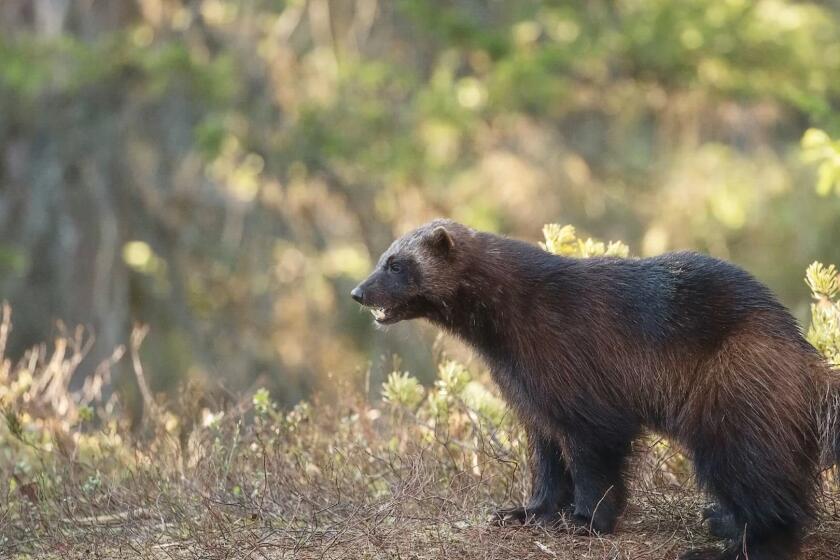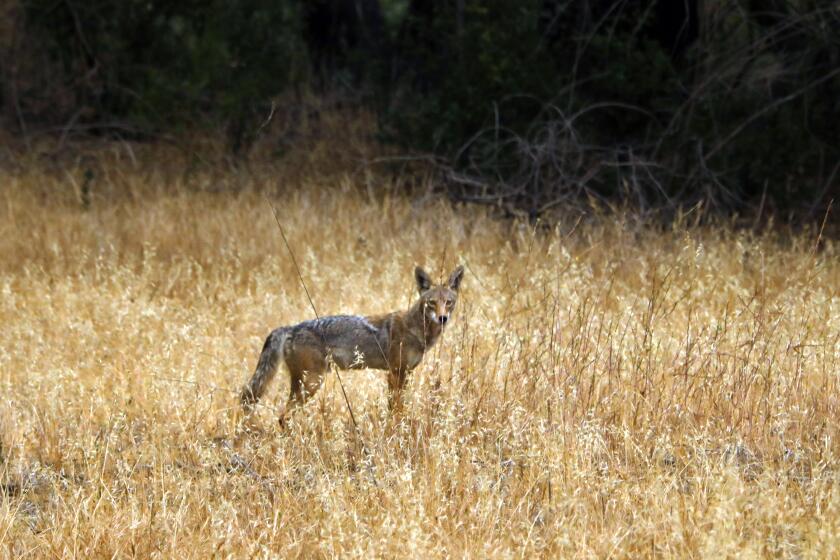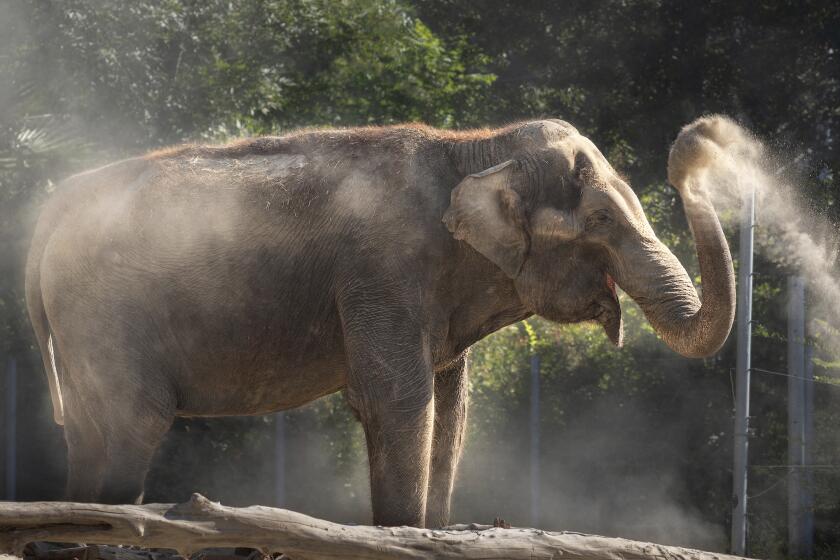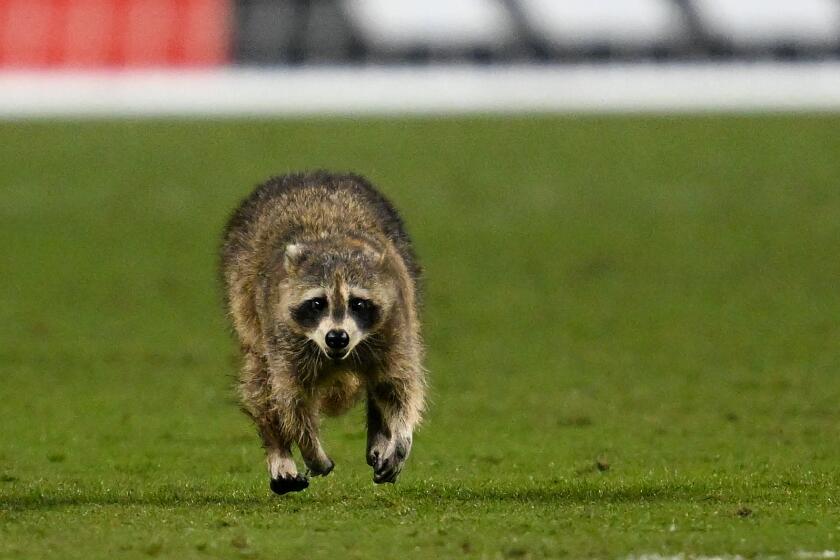World Zoos Unite to Protect Rare Animals and Habitats : Wildlife: About 40 American zoos and aquariums are taking part in more than 1,200 conservation projects in 60 nations. One such effort aims to save giant pandas in the wilds of China.
When Shi-Shi and Bai Yun move into their new home at the San Diego Zoo this spring, they’ll help save the age-old home of their fellow giant pandas in the wilds of China.
In return for China’s loan of what will be the only panda couple in the United States, the zoo is joining the Chinese in a multifaceted effort to protect the rare animals and their habitat.
The agreement is the latest in a growing movement by zoos to broaden their missions by helping to rescue not only the world’s endangered animals, but their equally endangered natural territories.
Some 40 U.S. zoos and aquariums take part in more than 1,200 conservation projects in 60 countries, said Michael Hutchins, director of conservation and science at the American Zoo and Aquarium Assn. The programs, conducted both at zoos and in the field, embrace financial assistance, education, research and technology.
In recent decades, many zoos have re-created habitats for their wildlife exhibits. Animals roam through man-made tropical jungles, African savannas, rain forests and deserts.
The zoos also have taken an important, though controversial, role in saving endangered species.
“They are seen as a kind of Noah’s Ark,” Hutchins said. “The idea is that when a species is threatened, it should be brought into captivity, bred and then reintroduced to a restored natural habitat at some future date.”
Critics argue that captive breeding and ersatz ecosystems are no substitute for the real thing. In response to the criticism, many zoos have begun to refocus and expand their approach.
“We can breed animals to our hearts’ delight, but to what end, if there’s no place left for these animals in the wild?” asked Carmi G. Penny, curator of mammals at the San Diego Zoo. “We need to take the next step. We need to get extremely active in natural habitat conservation.”
Thanks to the Roger Williams Park Zoo in Providence, R.I., youngsters in Coloso, Colombia, are learning to appreciate the cotton-top tamarin and the forest that is the only natural home to this tiny, nearly extinct monkey.
The zoo has sponsored field trips for Colombian schoolchildren into the forest, which most had never visited, although it is only about 2.5 miles from their village. “For conservation to work, you have to build community awareness. Local people must value the habitat and learn how man and nature live in harmony,” said Anne Savage, director of research at the Providence zoo and leader of the Colombian program.
An unbroken protected area encompassing tropical forests and coastal habitats soon will stretch through all seven countries of Central America, providing a site for important conservation projects. Called Paseo Pantera (Path of the Panther), the project is a joint effort of the Caribbean Conservation Council and the Wildlife Conservation Society, parent organization of New York’s Bronx Zoo.
Another Bronx Zoo program uses satellites to track elephants in Africa.
Five years ago, the Minnesota Zoo “adopted” Ujung Kulon National Park on the Indonesian island of Java. The park is one of the last strongholds of the Javan rhinoceros, one of the world’s most endangered large mammals.
Through grass-roots fund-raising, the zoo, in Apple Valley, Minn., has provided $75,000 to purchase equipment and improve park facilities. Zoo personnel have gone to Java to work with Indonesians on management and specific conservation projects.
“We have reached beyond our own fences to protect wild animals where they live naturally,” said Ronald Tilson, director of conservation at the Minnesota Zoo.
One of the longest reaches of any zoo belongs to San Diego. It has a hand in conservation projects in Australia, Africa, Asia and South America.
With the largest collection of koalas outside Australia, the zoo is working to save the cuddly marsupial, whose numbers have declined 50%--to an estimated 40,000 to 80,000--in the past decade. The most important factor in the koala’s survival is its habitat, according to the Australian Koala Foundation.
Koalas have lost nearly 80% of their eucalyptus forest homes to urbanization, fires and other threats, and most of their remaining territory is unprotected. At least 4,000 koalas a year are maimed by dogs, run over by cars, drowned in swimming pools or taken ill.
The San Diego Zoo is conducting “browse studies” among its koalas to explore their interaction with eucalyptus trees, which are essential to their feeding, reproduction and recreation.
The zoo sent a team of specialists to Australia last November to work with the Koala Foundation in the most extensive koala habitat inspection ever undertaken. “We visited three or four sites a day, looking for evidence of koalas--things like fecal pellets or scratch marks on the tree trunks,” said Valerie Thompson, an assistant curator of mammals, who led the team.
Scientists from other American zoos will join the group for another visit this year.
San Diego’s panda program will feature an added dimension--financial assistance to China. The zoo will contribute at least $1 million a year for 12 years to wild panda habitat protection.
The Chinese hope to double the number of existing panda preserves and establish protected wildlife corridors connecting the preserves. Only about 1,000 pandas remain in the wild in China, mainly in nature reserves.
In addition, scientists from San Diego will lead China and other zoos and wildlife organizations around the world in studies of giant panda behavior and reproductive biology, both in zoos and in the wild.
More to Read
Start your day right
Sign up for Essential California for news, features and recommendations from the L.A. Times and beyond in your inbox six days a week.
You may occasionally receive promotional content from the Los Angeles Times.






